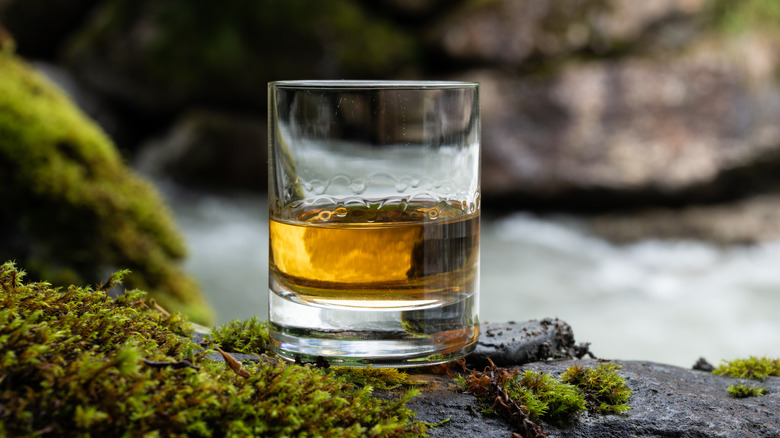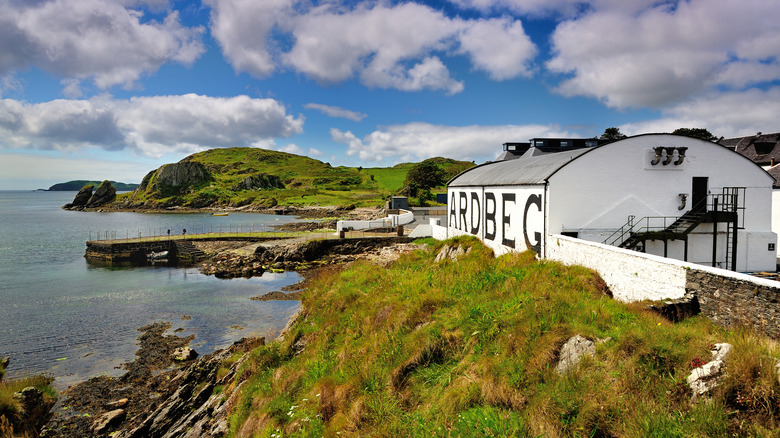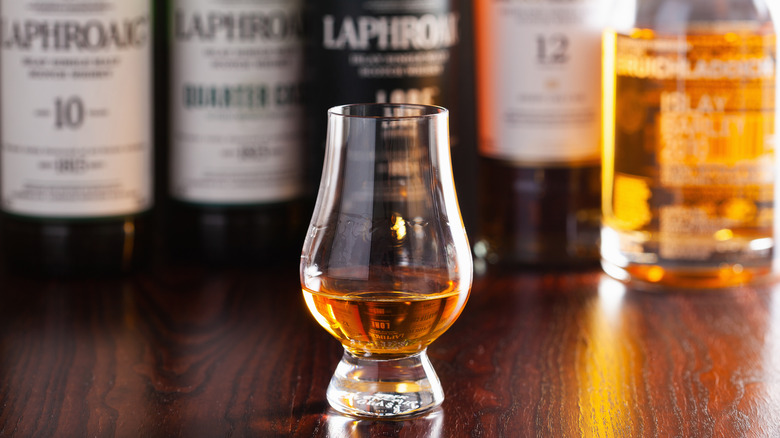Where To Find The Peatiest Scotch Whiskies
With a history dating back over 500 years, Scotch whisky is famous across the world. Every single second, 53 bottles of the stuff are shipped from Scotland to 180 global markets. And with over 140 malt and grain distilleries across Scotland, there are plenty of unique styles and flavor profiles to choose from — despite the fact that Scotch whisky is only made from three natural ingredients: water, yeast, and cereals.
The tastes of different Scotch whiskies can differ wildly, from fruity to fiery, and from spicy to smoky. And one of the descriptions often used is peaty. Scotch whisky is produced across five regions — Campbeltown, Highland, Islay, Lowland, and Speyside — but the peatiest drams can be found on Scotland's Western Isles (which are sometimes considered the sixth region, but they are usually lumped in with the Highlands).
Created by the peat fires that are used to dry the barley, the smoky and peaty flavors can vary in intensity. And though some whisky fans love them, others can find the strong flavors and aromas unpleasant. Descriptions can range from briny or medicinal to tires, or gasoline. But for those who crave the punchiness of these sorts of whiskies, it's the distilleries on the islands of Skye, Jura, and, most famously, Islay that proudly produce the peatiest.
The most famous peated whiskies come from Islay
The varying flavors of Scotch whiskies boil down to the differences between Scotland's whisky regions, and it's the rugged Western Isles that produce the peatiest. Originally used as a domestic fuel in Scotland, peat, which derives from a build-up of partially decayed organic matter in the ground, was traditionally used to fire the kilns in distilleries. And while some distilleries, such as those in the regions of Lowland and Speyside, moved onto alternative fuels – such as coal or coke — over the years, others, such as Islay, have continued to use peat to dry out the malted barley.
Islay (pronounced eye-luh) is renowned for its heavily peated whiskies, which it has been producing since the 1700s. Three distilleries on the western shore of the island are especially well-known for peaty malts — Laphroaig, Lagavulin, and Ardbeg — although other whiskies from the region also include Bunnahabhain, Bruichladdich, and Bowmore.
While Islay is synonymous with peaty single malts, other Scottish islands also produce some notable examples. Talisker, a distillery in Loch Harport in Skye, is famous for its peaty whiskies. And Jura's tiny community of around 212 people all play a part in the island's lightly peated whisky.
Peat fires give the whisky its love-it-or-hate-it flavor
Burning peat to dry the barley gives whiskies their signature smokiness, but the distinctive flavors and aromas imparted by peat fires are not for the faint-hearted. Some describe the taste as like iodine or Band-Aids – while others enjoy a seaweed-like brininess.
That flavor, which can prove divisive among whisky drinkers, is not just about personal preference. There is actually a way to measure how peaty a whisky is, which partly depends on how long it has been exposed to the smoke, and how much peat is used. This can be measured in phenol parts per million, which describes the amount of phenolic compounds that give the whisky its smoky, peaty flavor. It can range from around 10 phenol parts per million (ppm) up to about 60 ppm for whiskeys that are more heavily peated. Although one Islay distillery, Bruichladdich, released a whisky in 2017 that measured a magnificent 309 ppm.
But peaty Scotch whiskies are about much more than just the level of smokiness; they're about taste and time-honored traditions. And if you're a fan of peaty whiskies, they're not just limited to Scotland, either. You'll also find examples of peated whiskies in Ireland, Japan, the USA, and India, so there's plenty of variety for peat lovers to explore.



